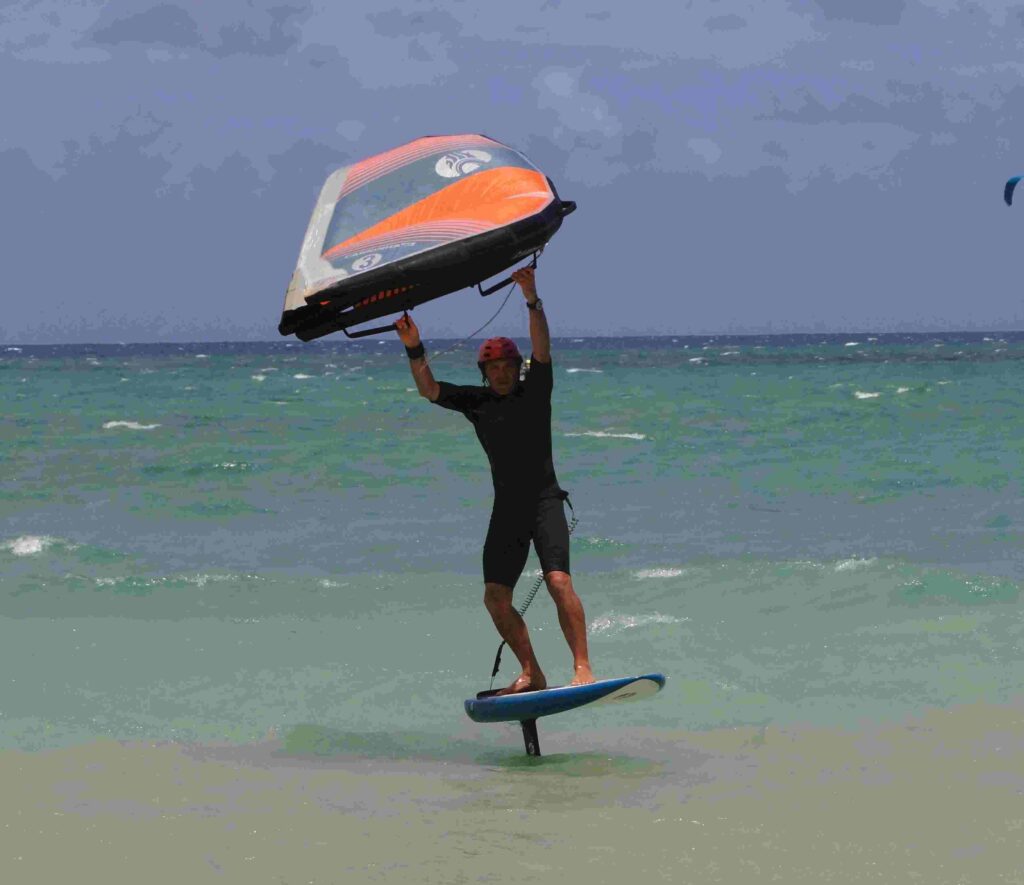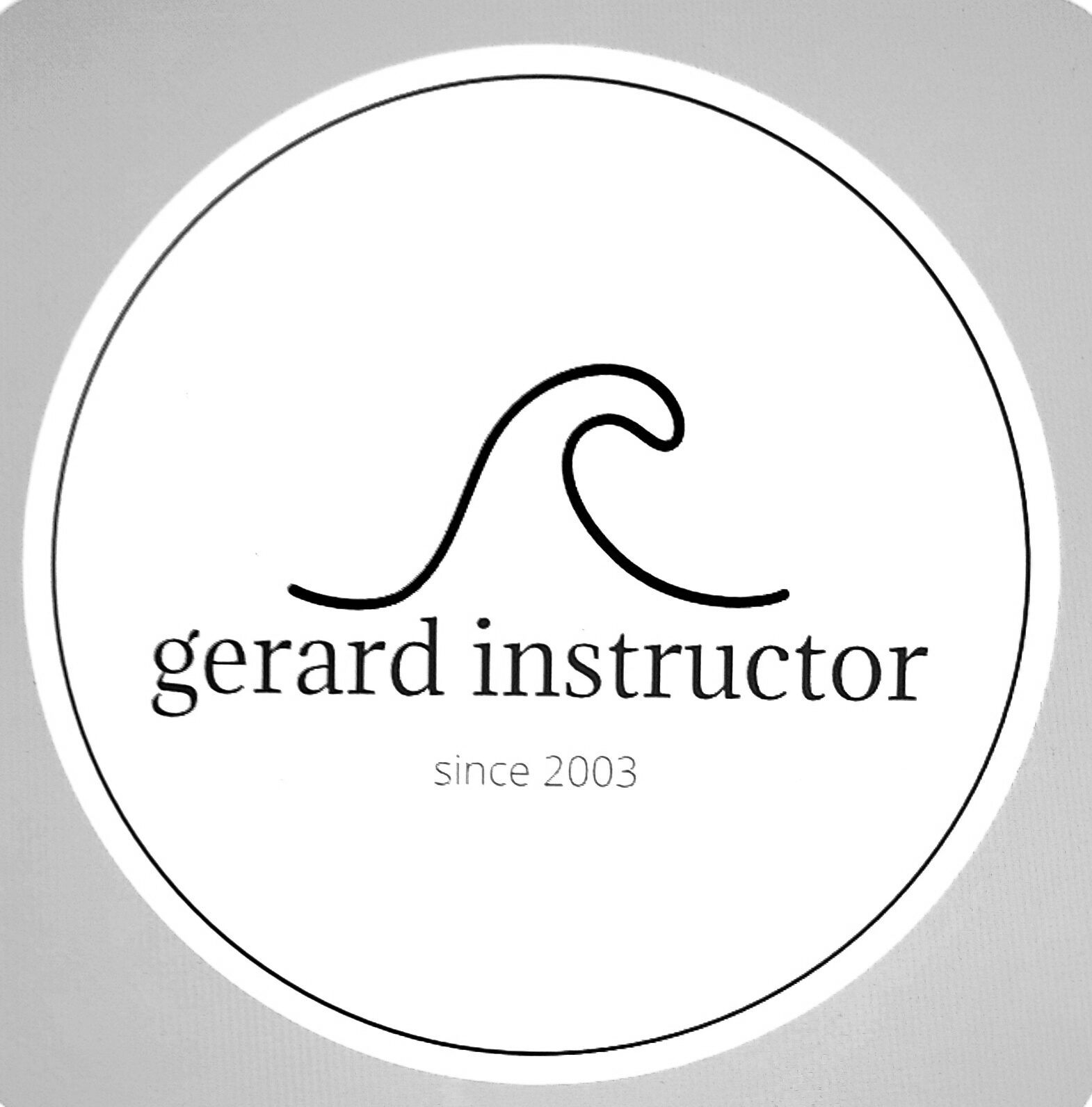Frequently Asked Questions


Wing foiling is such an awesome sport, and I’m thrilled you’re interested in it! Here’s what you’ll need for your lessons?:
Equipment ?:
1. Wing: A handheld inflatable wing to catch the wind and propel you forward.
2. Foil Board: A board with a hydrofoil attached to it, which lifts the board out of the water for a smooth ride.
3. Foil: The hydrofoil itself, consisting of a mast, fuselage, front wing, and stabilizer.
4. Harness (Optional): Some riders use a harness for longer sessions to reduce arm fatigue.
5. Leash: A leash to attach the board to your ankle or waist.
6. Safety Gear: Helmet, impact vest, and wetsuit or rash guard depending on the water temperature.
7. Pump: To inflate your wing if it’s an inflatable model.
Personal Preparations ?:
1. Basic Skills: It helps if you have some experience with windsurfing, kitesurfing, or SUP (stand-up paddling).
2. Fitness: Wing foiling requires a good level of fitness, particularly core strength and balance.
3. Lessons: Find a qualified instructor or wing foiling school for professional guidance.
4. Safety Knowledge: Understanding wind conditions, currents, and weather patterns is essential.
Getting hands-on with an instructor can really fast-track your progress and ensure you’re learning in a safe and supportive environment.
Ready to take flight over the waves? If you have any more questions or need further info, feel free to ask!
——————————————————————————————————-
Wingfoiling, or wing surfing, combines elements of windsurfing, kitesurfing, and foiling, making SAFETY an essential aspect to ensure an enjoyable experience during WINGFOILING LESSON. Here are some key safety considerations:
1. Equipment Safety?:
– Check Your Gear: Regularly inspect your wing, board, foil, and leash for any signs of wear or damage.
– Use the Right Equipment: Choose equipment suitable for your skill level and the current wind conditions.
2. Weather Awareness?:
– Wind Conditions: Wingfoil only in conditions that match your experience level. Avoid overly strong, gusty, or unpredictable winds.
– Weather Forecast: Always check the weather forecast and be aware of any sudden changes or approaching storms.
3. Safety Gear?:
– Helmet and Impact Vest: Wear a helmet to protect your head and an impact vest to safeguard your torso.
– Leash: Use a board leash to prevent losing your board. Ensure it is securely attached and in good condition.
4. On the Water?:
– Stay Clear: Maintain a safe distance from other wingfoilers, swimmers, and boats to avoid collisions
5. Self-Rescue Techniques?:
– Learn Self-Rescue: Familiarize yourself with self-rescue techniques in case of an emergency, such as a wing malfunction or sudden weather changes.
– Practice: Practice self-rescue in controlled conditions to ensure you’re prepared for real-life situations.
6. Local Regulations?:
– Know the Rules: Be aware of and adhere to local wingfoiling regulations and guidelines. Some areas may have designated zones or restrictions.
Maui:
The 11 o’clock rule at Kanaha Beach Park, Maui, is a local guideline designed to ensure safety and harmony among different ocean users. It means that swimmers, fishermen, and spear fishermen have exclusive access to the ocean before 11 AM. After 11 AM, windsurfers and kiteboarders can also use the area, but they need to be mindful of any remaining fishermen
This rule helps to prevent accidents and conflicts, ensuring everyone can enjoy the beach safely and peacefully
7. Communication:
– Stay Connected: Inform someone on land about your wingfoiling plans and estimated return time.
– Use Signals: Learn and use hand signals to communicate with other wingfoilers and safety personnel.
8. Physical Condition:
– Stay Fit:Maintain a good level of physical fitness to handle the demands of wingfoiling.
– Hydrate and Rest: Stay hydrated and take breaks as needed to avoid fatigue.
9. Training and Experience:
– Take Lessons: Invest in professional wingfoiling lessons to learn proper techniques and safety practices.
– Start Slow: Gradually progress from beginner to advanced skills, gaining experience and confidence along the way.
By following these safety measures, you can enjoy the exciting experience of wingfoiling while minimizing risks. Stay safe and have fun out there!
——————————————————————————————————
What I need for kitesurfing lessons?
That sounds like an exhilarating endeavor! For kitesurfing lessons, you’ll need to consider both the equipment and personal preparations:
Equipment:
1. Kite: Different sizes depending on wind conditions and your weight.
2. Control Bar and Lines: To steer and control the kite.
3. Harness:Waist or seat harness to attach yourself to the kite.
4. Board: There are different types like twin-tip, foil or directional boards.
5. Safety Equipment: Helmet, impact vest, and safety leash.
6. Wetsuit or Rash Guard: Depending on the water temperature.
Personal Preparations:
1. Fitness: A decent level of physical fitness and strength is helpful.
2. Swimming Skills: Strong swimming skills are essential for safety.
3. Lessons: Find a certified instructor or kitesurfing school for professional guidance.
4. Weather Knowledge: Understanding wind conditions and weather patterns is crucial.
It’s also important to research local kitesurfing spots and check if there are any specific regulations or rules you need to follow. And, of course, always prioritize safety and take the time to learn and practice the basics before attempting more advanced maneuvers.
Ready to catch the wind? If you have any other questions or need more details, just let me know!
——————————————————————————————————-
SAFETY is paramount in KITESURFING LESSON to ensure an enjoyable and injury-free experience. Here are some key safety considerations to keep in mind:
1. Equipment Safety:
– Check Your Gear: Always inspect your kite, lines, bar, and harness for any damage or wear before heading out. Ensure all connections and safety systems are functioning correctly.
– Use the Right Equipment: Select equipment appropriate for your skill level and the current wind conditions.
2. Weather Awareness:
– Wind Conditions: Kitesurf only in suitable wind conditions for your experience level. Avoid overly strong, gusty, or offshore winds.
– Weather Forecast: Check the weather forecast for any sudden changes or storms. Be aware of local wind patterns and tidal movements.
3. Safety Gear:
– Helmet and Impact Vest: Wear a helmet to protect your head and an impact vest to safeguard your torso.
4. Launching and Landing:
– Safe Zones: Choose a safe and clear area for launching and landing your kite, away from obstacles, power lines, and other people.
– Assistance: Have an experienced kitesurfer assist you with launching and landing, especially if you’re a beginner.
5. On the Water:
– Stay Clear: Maintain a safe distance from other kitesurfers, swimmers, and boats to avoid collisions.
– Right of Way: Understand and follow the right-of-way rules on the water. For example, the kitesurfer on the starboard tack (right-hand forward) has the right of way.
6. Self-Rescue Techniques:
– Learn Self-Rescue: Familiarize yourself with self-rescue techniques in case of an emergency, such as a kite malfunction or sudden weather changes.
– Practice: Practice self-rescue on calm days to ensure you’re prepared for real-life situations.
7. Local Regulations:
– Know the Rules: Be aware of and adhere to local kitesurfing regulations and guidelines. Some areas may have designated kitesurfing zones or restrictions.
8. Communication:
– Stay Connected: Inform someone on land about your kitesurfing plans and estimated return time.
– Use Signals: Learn and use hand signals to communicate with other kitesurfers and safety personnel.
9. Physical Condition:
– Stay Fit: Maintain a good level of physical fitness to handle the demands of kitesurfing.
– Hydrate and Rest: Stay hydrated and take breaks as needed to avoid fatigue.
10. Training and Experience:
– Take Lessons: Invest in professional kitesurfing lessons to learn proper techniques and safety practices.
– Start Slow: Gradually progress from beginner to advanced skills, gaining experience and confidence along the way.
By following these safety measures, you can enjoy the thrill of kitesurfing while minimizing risks. Stay safe and have fun out there!
